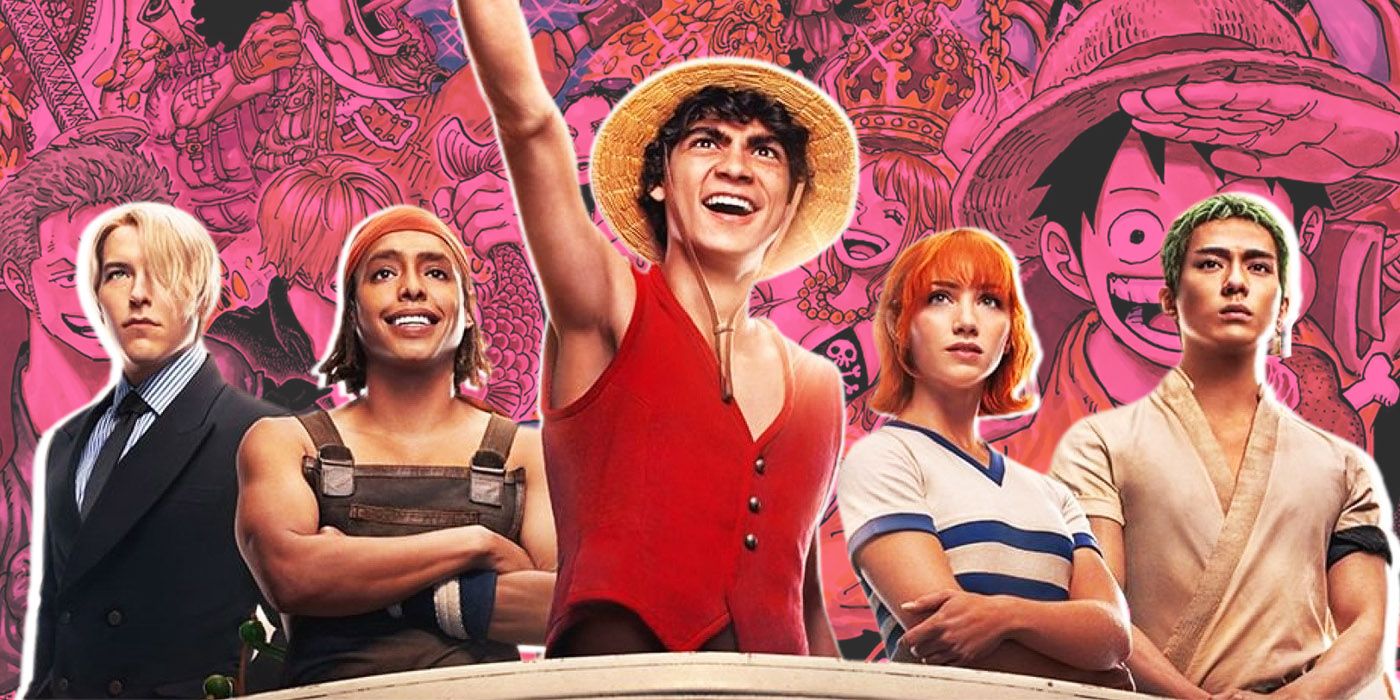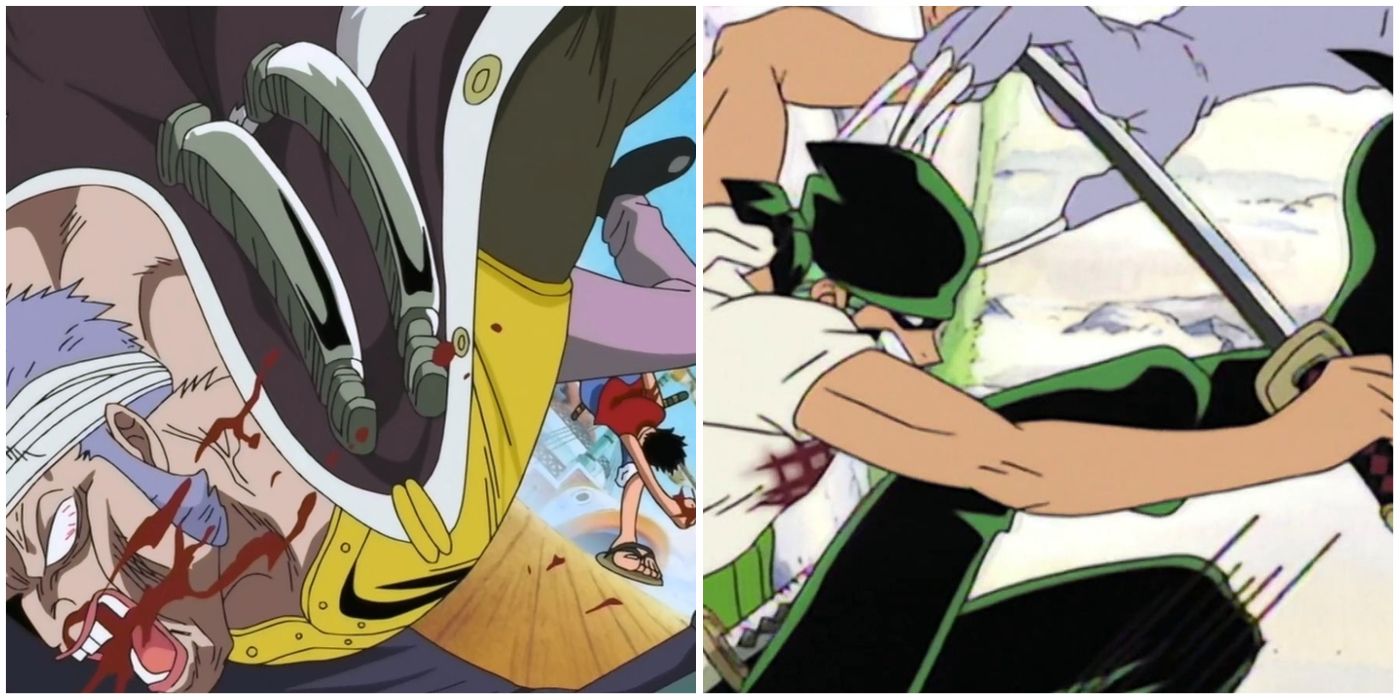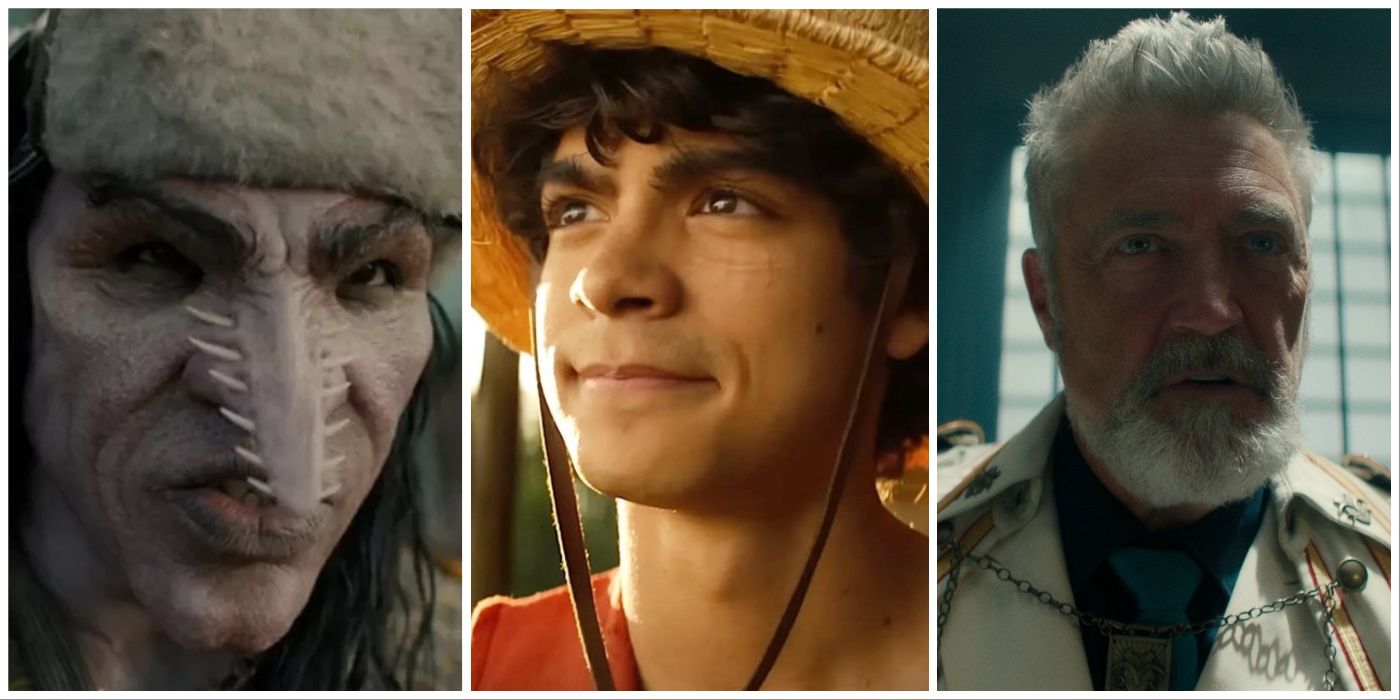
The Netflix One Piece live-action series has one of the most monumental tasks of any adaptation. It needs to take a narrative built up over 26 years and compress its content into eight-episode seasons. Even at a rate of one hour per episode, that should take a while. Most arcs have taken several years and dozens of chapters or episodes to cover. Even the East Blue Saga, the first leg of the Straw Hat Pirates' voyage, took over 60 episodes to tell in anime form. The only way for the Netflix version to get through all this while the actors are still young enough for the roles is to make enormous cuts to the content.
Now that Season 1 of the live-action is out, fans can see how the series is going to do to cut down on its runtime. While fans could have guessed what type of material the Netflix series would skip, its premiere confirmed what would be removed and how. Some instances of removing content resulted in rearrangements and new material nobody could have anticipated. Some diehard fans may be unhappy with the loss of crucial scenes in this culling process, but it was necessary to make the series concise and timely.
How Did One Piece Live-Action Shorten the Story?
A natural change for keeping the Netflix series shorter than the anime would be removing filler. Any non-canon storylines from the anime used to keep it behind the manga can be cut without the mainstream audience missing a thing. This would mean avoiding non-canon material from the movies, games, and other media beyond the original manga. However, there could still be some references and cameos.
The Netflix series doesn't have to pace itself like the anime. That version of One Piece does what it can to pad each episode's runtime into 24 minutes. This padding serves several purposes, including keeping the anime a healthy distance from the latest chapter, fitting each episode into a 30-minute television time slot, and covering the desired amount of content in each episode. The Netflix series doesn't have to worry about the former two points, so it's free to present content at its desired pace. The result is eight episodes that range anywhere from 48 minutes to 64.
The removal of padding comes in various forms. It means less gratuitous recaps, flashbacks to previous scenes, repeated animations (or rather the live-action equivalent), reaction shots, or dialogue covering information the audience already knows. Thus, much of what Toei Animation took five minutes to present can be done in one. The characters also don't monologue internally. The audience has to infer the characters' thoughts using spoken words, expressions, and actions. This way, the Netflix series allows information to flow naturally.
The fights are also cut down significantly. In the anime, a single battle between a Straw Hat Pirate and one of the enemy's top men can last at least one episode. The Netflix series breaks these fights into brief action scenes, so they don't last longer than five minutes. Luffy's fights with the main villains are the only exception, but even those are cut down considerably.
Which Characters Were Removed from the One Piece Live-Action Series?
One of the most significant cuts in the OPLA is the cast. One Piece is home to a broad arrangement of characters. The East Blue Saga has at least a few dozen noteworthy characters. However, many of these characters were removed from the Netflix series, presumably to keep focus and development on the characters who mattered most.
The nature of Jango's removal may provide a significant clue regarding which characters will be cut in the future. Rather than make a physical appearance, his face appeared on a wanted poster, among several others. This might mean anyone who cameos in a wanted poster shouldn't be expected to show up unless their role is crucial to One Piece's overarching plot. In other words, if Foxy's Davy Back Fight isn't reused in the Final Saga before the Netflix series reaches that point, they'll skip it. On the other hand, Cavendish hardly did anything in the series proper, so his inclusion on a wanted poster makes for the ideal consolation prize.
Don Krieg wasn't removed from the Netflix series, but his role was reduced considerably. Instead of being the primary antagonist of the Baratie Arc, he was swiftly cut down by Mihawk in a showcase of the latter's power. In a way, this was his role in the original series (to show how dangerous the Grand Line and the Seven Warlords will be). In this sense, skipping his fight with Luffy wouldn't change much.
However, one character whose removal may have resounding repercussions is Hachi. In the original series, he was a crew member of the Arlong Pirates who later turned over a new leaf and befriended the Straw Hats. Thus, when Luffy punches a Celestial Dragon for shooting him on Sabaody, it sets off a chain of events that ends in the crew's separation. The octopus Fish-Man must at least befriend the Straw Hats in that arc for that inciting incident to happen.
Did One Piece Live-Action Leave Anything Out?
Certain canon story arcs were also cut down and mixed to save time. Again, the Krieg Pirates were literally cut out of the story by Mihawk, so the Baratie had to be attacked by the Arlong Pirates. The Loguetown Arc was also cut, so the introduction of Smoker, Tashigi, Monkey D Dragon, and Kitetsu III will have to wait; of these four things, only Smoker was teased at the end of the season. This change means Luffy's altercation with the Marines instead comes in the form of Garp, Koby, and Helmeppo; this may also replace their meeting in the Post-Enies Lobby Arc if the Netflix series gets that far.
Besides Garp, several aspects of the One Piece world were presented ahead of time. Several characters and groups have either shown up or made cameos – Foxy, Cavendish, Baroque Works, etc. The oppression of the Fish-Men was also covered, thus explaining Arlong's hatred of humans. Even pieces of lore have been dropped, like the Liar Noland fairy tale. Covering things like this ahead of schedule will save the need for lengthy explanations in future seasons.
Of course, plenty of content hardcore fans would call vital was also cut. Stretching out certain scenes was important for fleshing out the world and characters. It also established the series' tone so audiences could become more emotionally invested. These are the kinds of things that cemented the original series as a favorite in most people's hearts. The Netflix series may be going for a unique tone, but that also means it's not guaranteed to resonate with viewers as the original did.
With all these changes, One Piece's Netflix series reduced the East Blue Saga's 61-episode runtime to 451 minutes with credits, about one-third of the length. This even left it with enough time for a semi-original subplot surrounding Garp, Koby, and Helmeppo. This season's time-cutting techniques will likely continue to be used in future seasons, for better or worse.




Post a Comment